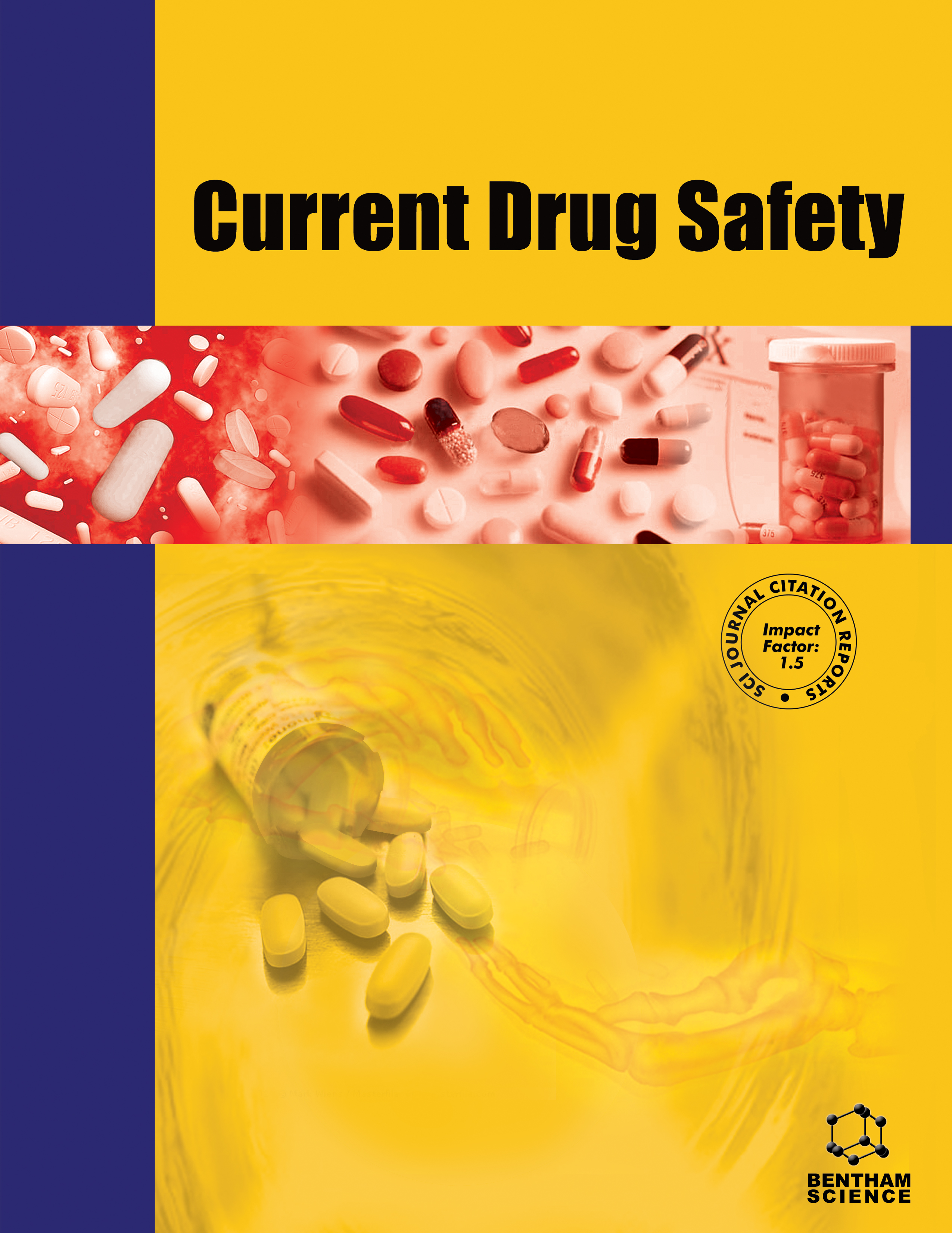- Home
- A-Z Publications
- Current Drug Safety
- Previous Issues
- Volume 1, Issue 2, 2006
Current Drug Safety - Volume 1, Issue 2, 2006
Volume 1, Issue 2, 2006
-
-
Evolving Paradigms in Pharmacovigilance
More LessAuthors: Wendy Brewster, Trevor Gibbs, Karol LaCroix, Alison Murray, Michael Tydeman and June AlmenoffAll medicines have adverse effects as well as benefits. The aim of pharmacovigilance is to protect public health by monitoring medicines to identify and evaluate issues and ensure that the overall benefits outweigh the potential risks. The tools and processes used in pharmacovigilance are continually evolving. Increasingly sophisticated tools are being designed to evaluate safety data from clinical trials to enhance the likelih Read More
-
-
-
Reducing False Positive Findings in Statistical Analysis of Pharmacogenomic Biomarker Studies Using High-Throughput Technologies
More LessThe promise of pharmacogenomics lies in the potential to establish a personalized drug therapy with the intent of maximizing effectiveness and minimizing risk, through development of pharmacogenomics biomarkers. However, currently, most pharmacogenomic measurements are not considered valid biomarkers with clear clinical significance, thus this field is in early developmental stages. Recently, the development of Read More
-
-
-
Psychiatric Side Effects of Interferon Treatment
More LessBackground. Interferons are employed in the management of multiple sclerosis, hepatitis C and certain malignancies. Neuropsychiatric toxicity can interfere with the successful use of these drugs. Methods. This review was based on Medline literature searches, supplemented by bibliographical citations in identified papers. Information uncovered in the literature review was interpreted in light of related pharmacoepidemiological Read More
-
-
-
InhaledInsulin: A Novel and Non-Invasive Way for Insulin Administration?
More LessOver the past few years significant steps forward have been made towards the development of insulin formulations suitable for inhalation via several delivery systems. This innovative route of insulin delivery offers the potential of administering pre-meal insulin in a non-invasive way to patients currently receiving multiple daily injections. This article describes the pharmacodynamic and pharmacokinetic profiles and the e Read More
-
-
-
Exogenous Surfactant in Paediatric Acute Lung Injury and Acute Respiratory Distress Syndrome
More LessAuthors: Stephen D. Playfor and Venkata K.T. NootigattuNatural pulmonary surfactant is a complex mixture of lipids and proteins with many biological functions. Surfactant is responsible for lowering the surface tension within alveoli and maintaining the functional integrity of the distal airways. In addition to this function surfactant components represent important elements of the host defence system of the lung. Acute Respiratory Distress Syndrome (ARDS) and Acute Lung Inju Read More
-
-
-
The Role of the New Zealand Intensive Medicines Monitoring Programme in Identification of Previously Unrecognised Signals of Adverse Drug Reactions
More LessAuthors: David W.J. Clark and Mira Harrison-WoolrychThe New Zealand Intensive Medicines Monitoring Programme (IMMP) was established in 1977 to enhance monitoring for previously unrecognised adverse drug reactions associated with selected new medicines. This involved establishing cohorts from prescription data and collection of event information: thus New Zealand was a pioneer in the development of the methodology now known as Prescription Event Monitoring (PEM Read More
-
-
-
Sirolimus Early Graft Nephrotoxicity: Clinical and Experimental Data
More LessAuthors: Nicolas Pallet, Eric Thervet, Christophe Legendre and Dany AnglicheauSirolimus (SRL) is a recently available immunosuppressive agent. SRL, is a macrolide isolated from Streptomyces hydroscopicus that, in complex with its cellular receptor, FK binding protein, potently inhibits downstream signaling by the mammalian target of rapamycin (mTOR). It has been shown to reduce the incidence of acute rejection episode after renal transplantation. SRL by itself does not seem to cause significant ne Read More
-
-
-
The Safety and Efficacy of Parathyroid Hormone (PTH) as a Biological Response Modifier for the Enhancement of Bone Regeneration
More LessAuthors: Christopher C. Tzioupis and Peter V. GiannoudisOsteoporosis is characterized by low bone mineral density and deterioration in the microarchitecture of bone that increases its fracture vulnerability. The mainstay of therapy for osteoporosis is anti-resorptive in mechanism. Parathyroid hormone (PTH) is the most recently approved anabolic agent for osteoporosis. The mechanism of PTH's skeleton anabolic action is composite involving pathways linked to common sig Read More
-
-
-
The Safety of the Temozolomide in Patients with Malignant Glioma
More LessAuthors: Alessandro Dario and Giustino TomeiThe temozolomide is a promising orally cytotoxic agent used in malignant glioma. The survival curve improvement after drug administration appears to be statistically significant. The review of temozolomide side effects is carried out by search on literature data found on web and is divided on the 4 grades of toxicity according to the National Cancer Institute Common Toxicity Criteria, version 2.0. The adverse effects r Read More
-
Volumes & issues
-
Volume 20 (2025)
-
Volume 19 (2024)
-
Volume 18 (2023)
-
Volume 17 (2022)
-
Volume 16 (2021)
-
Volume 15 (2020)
-
Volume 14 (2019)
-
Volume 13 (2018)
-
Volume 12 (2017)
-
Volume 11 (2016)
-
Volume 10 (2015)
-
Volume 9 (2014)
-
Volume 8 (2013)
-
Volume 7 (2012)
-
Volume 6 (2011)
-
Volume 5 (2010)
-
Volume 4 (2009)
-
Volume 3 (2008)
-
Volume 2 (2007)
-
Volume 1 (2006)
Most Read This Month
Article
content/journals/cds
Journal
10
5
false
en


